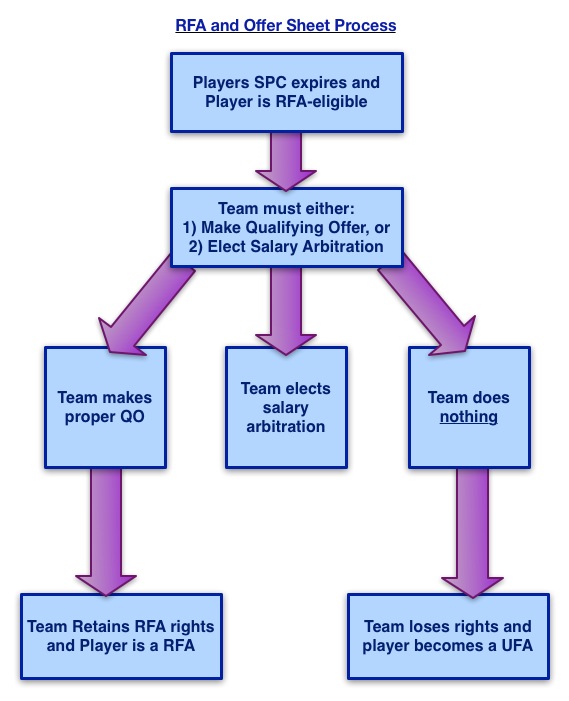In part one of our arbitration series we looked at arbitration eligibility. This next section details the hearing process, including permissible evidence and the repercussions of the arbitrator’s decision.
Salary arbitration determines a player’s salary through a hearing governed by a third-party arbitrator. The arbitrator takes all the permissible evidence into account in deciding how much a player should be paid per year. This section outlines three key elements of that process: term, permissible evidence, and the decision.
Term
The party being brought to salary arbitration chooses whether the decision is for one or two years. If a team chooses, however, they are restricted to one year if the player is eligible for unrestricted free agent the following year.
Evidence
Parties can present witnesses, affidavits (sworn written testimony), documents, statistics, and any other relevant evidence during the hearing, subject to certain restrictions (see more below). The CBA suggests the following preferred evidence:
- the player’s overall performance in previous seasons;
- number of games played in context of injuries or illnesses (or lack thereof);
- length of service in the league or with the team;
- how much a player contributed to the success/failure of his team last season;
- special qualities of leadership or public appeal relevant to his team responsibilities (i.e. the intangibles).
- performance of players considered comparable to the player in question by either party; or
- compensation of players considered comparable to the player in question by either party.
As stated above, this list is subject to certain restrictions. The CBA prohibits parties from introducing or using the following:
- any contract signed outside restricted free agency, including one signed after a team exercises a walk-away right;
- any contract of a player not considered a comparable by either party;
- any contract otherwise permissible that is signed less than three hours before the hearing starts.
- qualifying offers;
- the negotiation history between the parties, including any offers made;
- testimonials, videotapes, newspaper columns, press game reports, or similar materials;
- references to walk-away rights;
- any award issued by an arbitrator that preceded a team exercising its walk-away rights;
- a team or NHL’s financial condition;
- a team’s salary cap (or floor) situation;
- any salary arbitration award issued in ’05-’06; or
- compensation information for salary arbitration awards issued before July 22nd 2005.
There are three main takeaways from the evidentiary rules. One, the arbitrator’s decision is based largely on a player’s stats and intangibles, and the compensation received by players with similar stats and intangibles. Two, visual evidence such as highlight reels and game tape do not factor in to the arbitrator’s decision. This makes any determination strictly fact-based. Finally, if, during a players hearing, a comparable player signs an otherwise admissible contract, that contract cannot be used as evidence by either party.
Decision
The arbitrator’s decision comes within 48 hours after the hearing closes. The decision states:
- the contract term (one or two years as mentioned above);
- NHL salary to be paid by the team for that term;
- whether it is a two-way contract, and how much the player is paid in the AHL; and
- a statement explaining the decision.
Walk Away Rights
A team may reject an arbitration decision in a player-elected salary arbitration if the award is $3.9MM or more per year. That threshold increases by the same percentage rate that the average league salary increases.
A team does not have unlimited walk away rights. Rather, the number of times a team can reject a decision is tied to the number of decisions issued. A team facing up to two decisions has one walk away right. A team facing three of four decisions has two walk away rights. Finally, a team facing five decisions has three walk away rights.
The consequences of rejecting a decision depends on whether the club elected a one or two year term. If the decision is for a one year term, the player immediately becomes an unrestricted free agent. If the decision is for a two year term, the player and team enter into a one year contract for the salary awarded. The player becomes an unrestricted free agent at the end of that year.
